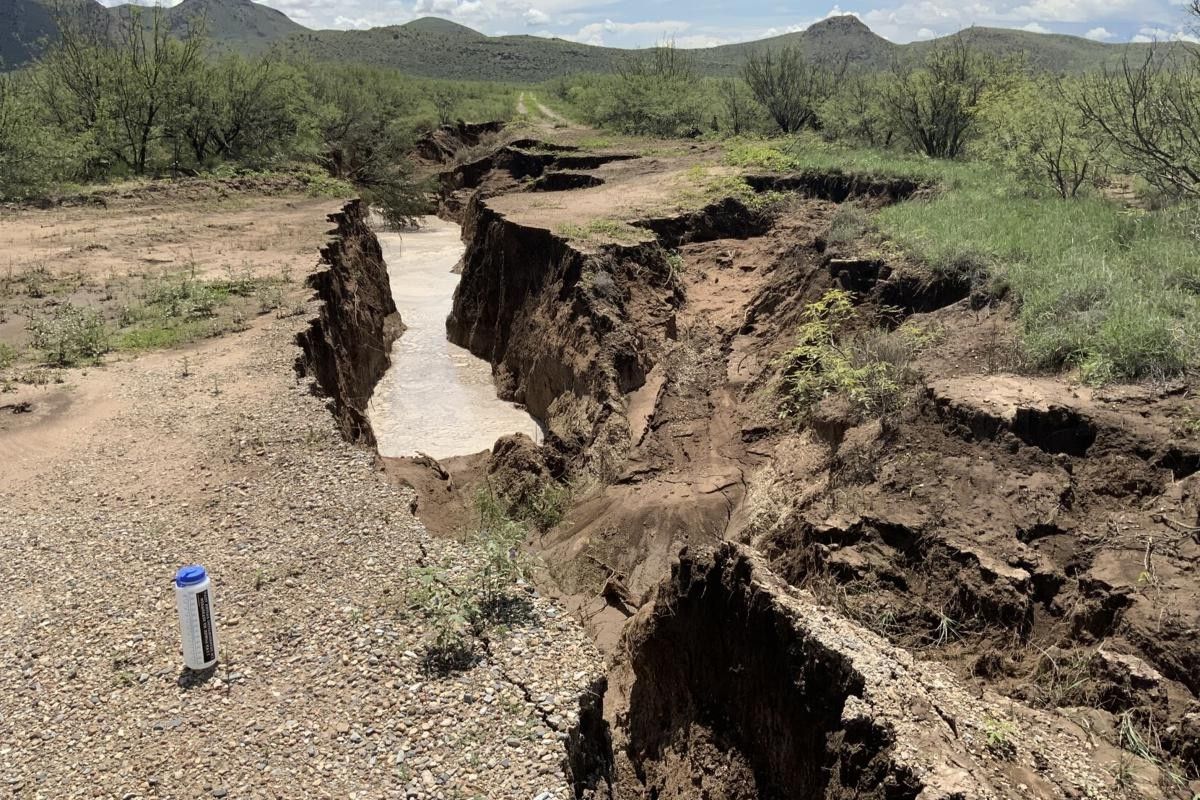
What is a fissure? A fissure is a narrow, elongated crack or opening, often found in rocks, glaciers, or even the human body. These splits can form due to various natural processes like volcanic activity, tectonic movements, or erosion. Why are fissures important? They play a crucial role in geology, helping scientists understand Earth's history and structure. Where can you find fissures? From the icy crevasses of Antarctica to the fiery rifts of volcanic landscapes, fissures are everywhere. How do fissures impact ecosystems? They can create unique habitats for plants and animals, influencing biodiversity. Are fissures dangerous? Some can be hazardous, especially those in volcanic regions or unstable terrains. Ready to learn more? Let's dive into 31 fascinating facts about fissures!
What is a Fissure?
A fissure is a narrow opening or crack, typically in rock or the earth's surface. These geological features can be found in various environments, from volcanic landscapes to ocean floors. Let's explore some fascinating facts about fissures.
-
Fissures are often formed by tectonic activity, where the Earth's plates move and create cracks in the crust.
-
Volcanic fissures can release lava, gases, and ash during eruptions, significantly altering the landscape.
-
The Great Rift Valley in East Africa is one of the most famous fissure systems, stretching over 6,000 kilometers.
-
Fissures can also form underwater, contributing to the creation of mid-ocean ridges and hydrothermal vents.
-
Iceland is known for its numerous fissures, thanks to its location on the Mid-Atlantic Ridge.
-
Fissures can vary in size, from tiny cracks to large chasms that are several meters wide.
Types of Fissures
Fissures come in different types, each with unique characteristics and formation processes. Understanding these types helps us appreciate their role in shaping the Earth's surface.
-
Tectonic fissures result from the movement of tectonic plates, often leading to earthquakes.
-
Volcanic fissures are associated with volcanic activity and can produce extensive lava flows.
-
Glacial fissures form in ice sheets and glaciers, creating crevasses that can be dangerous for climbers.
-
Erosional fissures develop due to the gradual wearing away of rock by wind, water, or ice.
-
Human-made fissures can occur from mining, drilling, or construction activities.
Fissures and Ecosystems
Fissures play a crucial role in various ecosystems, providing habitats and influencing environmental conditions.
-
Hydrothermal vents in oceanic fissures support unique ecosystems with organisms that thrive in extreme conditions.
-
Fissures in arid regions can collect water, creating microhabitats for plants and animals.
-
Some fissures serve as natural shelters for wildlife, offering protection from predators and harsh weather.
-
Fissures can influence groundwater flow, affecting the availability of water in surrounding areas.
-
In volcanic regions, fissures can create fertile soil, promoting plant growth and biodiversity.
Famous Fissures Around the World
Several fissures have gained fame due to their size, location, or historical significance. These fissures attract scientists and tourists alike.
-
The Silfra fissure in Iceland is a popular diving spot, where divers can swim between the North American and Eurasian tectonic plates.
-
The Thingvellir National Park in Iceland features a prominent fissure that marks the boundary between two tectonic plates.
-
The Laki fissure in Iceland caused one of the largest volcanic eruptions in history, lasting eight months in 1783.
-
The East African Rift is a major tectonic fissure that is slowly splitting the African continent into two.
-
The San Andreas Fault in California is a well-known tectonic fissure responsible for significant earthquakes.
Fissures in Human Culture
Fissures have also found their way into human culture, inspiring myths, legends, and artistic expressions.
-
In Greek mythology, fissures were believed to be entrances to the underworld.
-
Many cultures have legends about creatures or spirits living in fissures and caves.
-
Fissures have been depicted in literature and films as mysterious and dangerous places.
-
Some ancient civilizations built structures near fissures, believing them to be sacred or powerful.
-
Modern artists and photographers often capture the beauty and intrigue of fissures in their work.
Scientific Study of Fissures
Scientists study fissures to understand geological processes, predict natural disasters, and explore new environments.
-
Geologists use fissures to study the movement of tectonic plates and the formation of mountains.
-
Volcanologists monitor fissures to predict volcanic eruptions and assess hazards.
-
Oceanographers explore underwater fissures to learn about deep-sea ecosystems and geological activity.
-
Climate scientists study glacial fissures to understand the effects of climate change on ice sheets.
-
Engineers analyze fissures to ensure the safety and stability of structures built in fissure-prone areas.
The Final Word on Fissures
Fissures, those cracks in the Earth's crust, are more than just geological features. They tell stories of our planet's dynamic nature, revealing secrets about volcanic activity, tectonic movements, and even the formation of new land. From the fiery fissures of Iceland to the underwater marvels in the Pacific, these natural phenomena shape landscapes and influence ecosystems.
Understanding fissures helps scientists predict volcanic eruptions and earthquakes, potentially saving lives. They also offer unique opportunities for tourism and scientific research. So next time you see a crack in the ground, remember it's a window into the Earth's powerful forces at work.
Stay curious, keep exploring, and never underestimate the power of nature's wonders. Fissures may seem like simple cracks, but they hold the key to understanding our ever-changing planet.
Was this page helpful?
Our commitment to delivering trustworthy and engaging content is at the heart of what we do. Each fact on our site is contributed by real users like you, bringing a wealth of diverse insights and information. To ensure the highest standards of accuracy and reliability, our dedicated editors meticulously review each submission. This process guarantees that the facts we share are not only fascinating but also credible. Trust in our commitment to quality and authenticity as you explore and learn with us.
